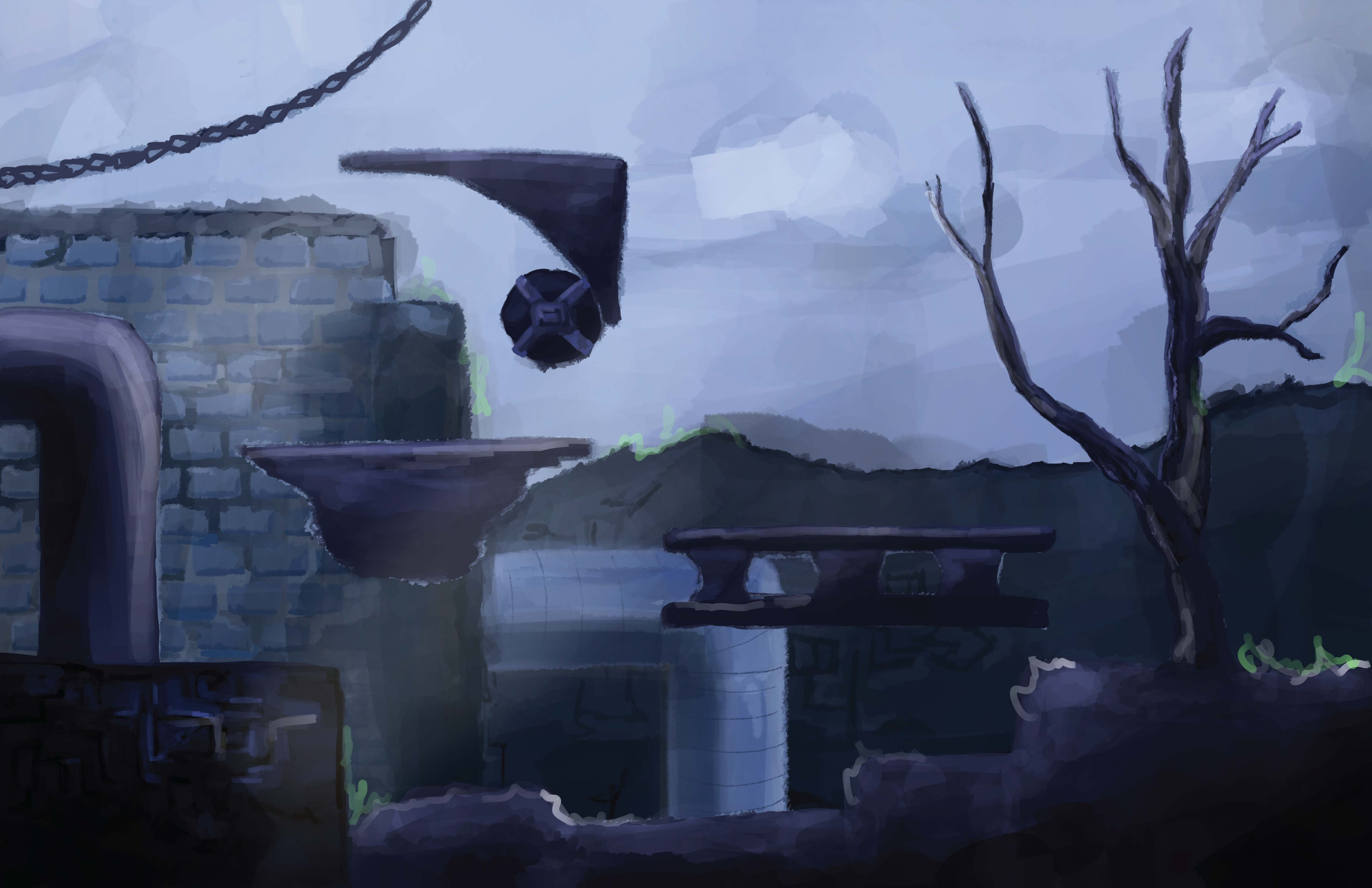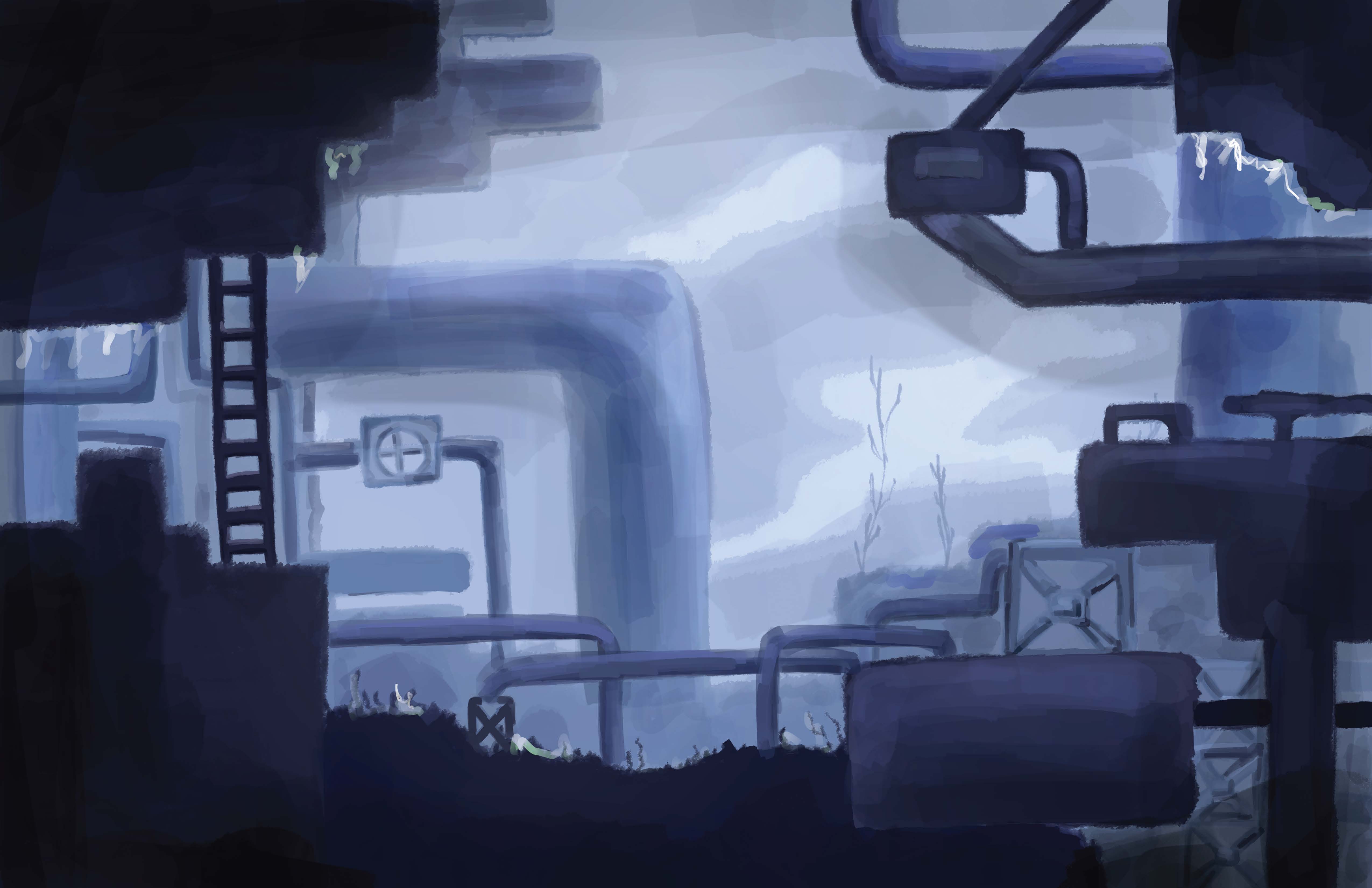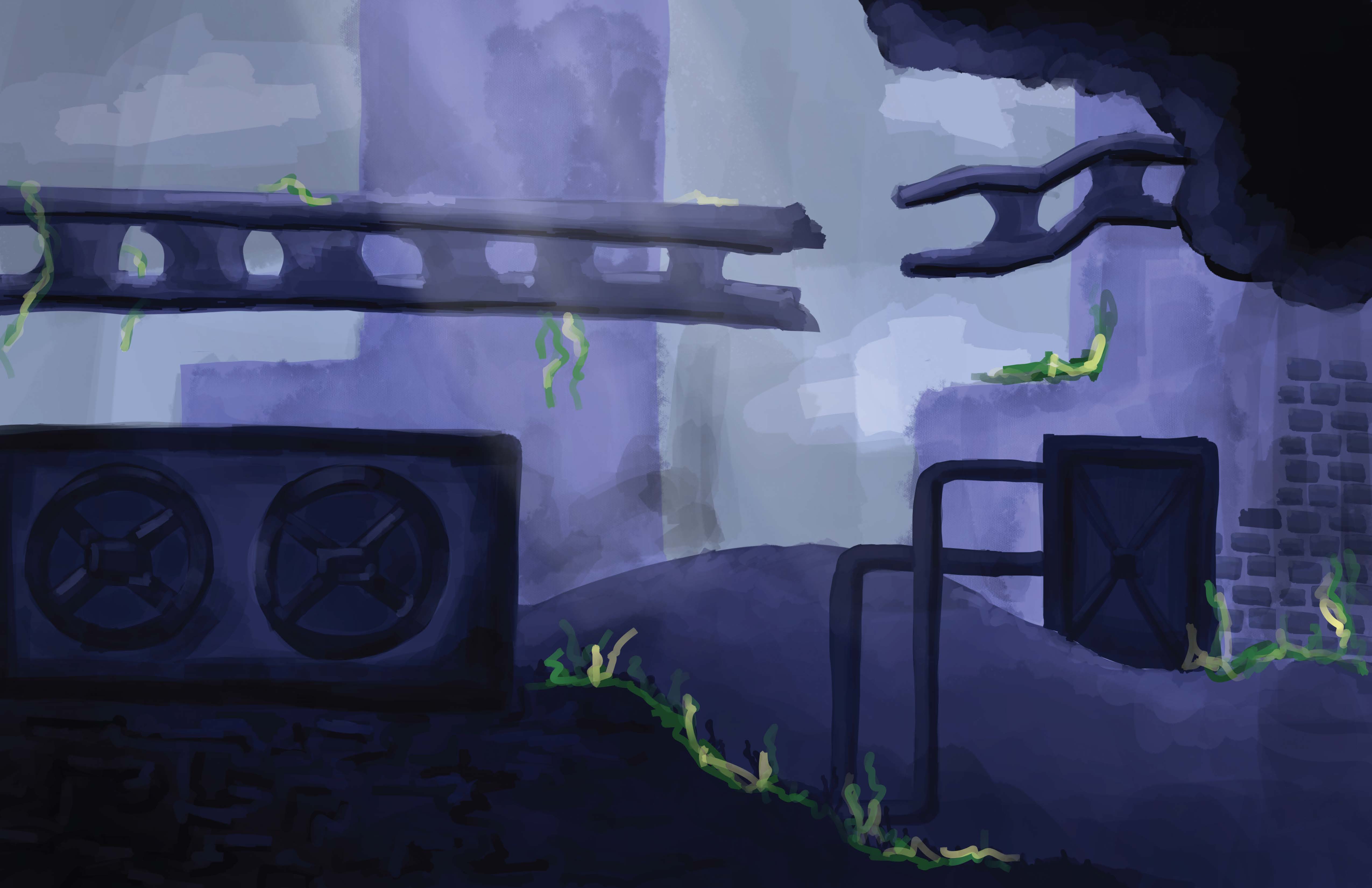Concept Art for a fictional video game
I came into my freshman year at Binghamton University as a mechanical engineering and physics major, loving art but not confident enough to pursue it in college. For the next year I bounced between majors, deep down knowing I wanted to major in art, but feeling like it would be a waste of time and that I wouldn’t get a job after school. One day, my freshman year suitemates invited me to their room to play a video game called The Last of Us (TLOU).
I had no idea that video games could tell such an incredible story. After spending a couple weeks with my roommates watching them play TLOU, I was in awe at the graphics, the characters, the story, and specifically, the environment. Right after finishing the game, the three of us were all sitting in their bedroom, talking about the game and the story while the credits were rolling. I wasn’t really paying attention to what my roommates were saying and just mindlessly watched the credits go by, until one caught my eye: Environment Artist. It was then that I finally knew what I wanted to do with my life: I wanted to be a part of a team that makes video games.
For my project, I knew I wanted to create environmental art. One game that I found was Rain World. This smaller indie game has beautiful environments unlike any I have ever seen. After taking a winter course where we examined storytelling methods used in video games, one that stood out the most for me was “environmental storytelling,” which is a technique used in video games where the environment gives the player context and details about the story without the use of dialogue or thoughts between the characters.
For my project, I created four separate digital paintings of environments inspired by Rain World, focusing on a theme of humanity vs technology and the negative effects that technology has on our environment, which is also a theme explored in Rain World. To add more interest, I also wanted to create animations such as light rays and moving clouds to bring life to the worlds that I was creating. I had never used Procreate until now, so there was a bit of a learning curve I had to go through to learn digital painting techniques, as well as After Effects for the animations.
-Addy Phoenix


